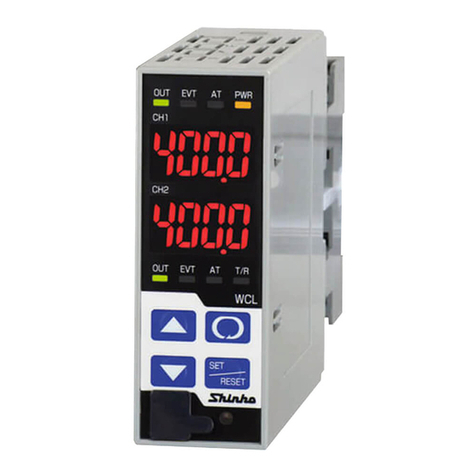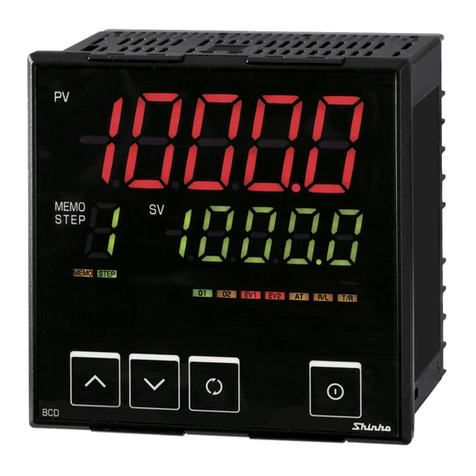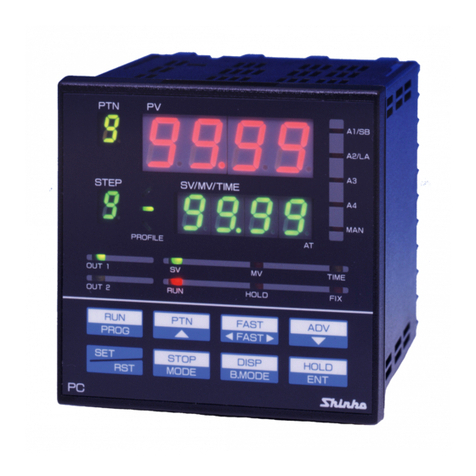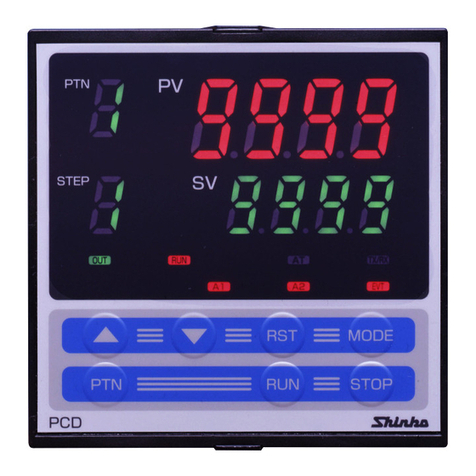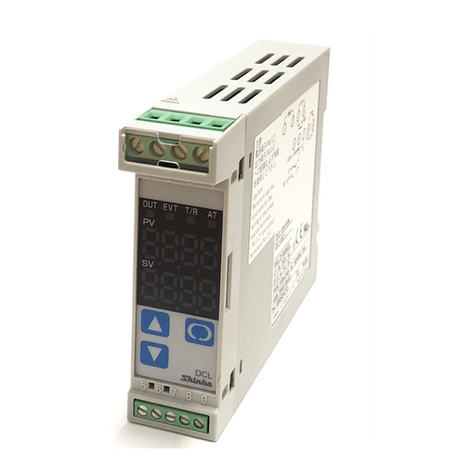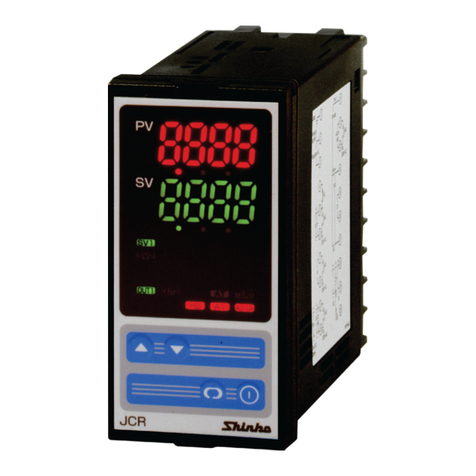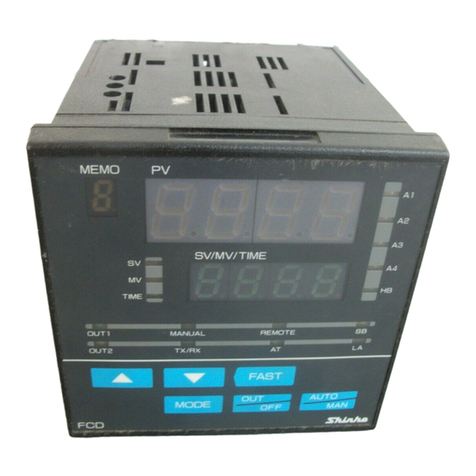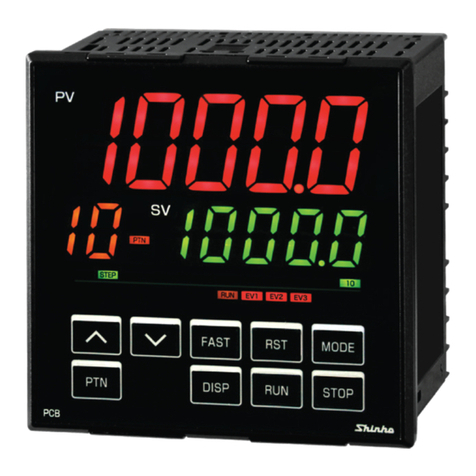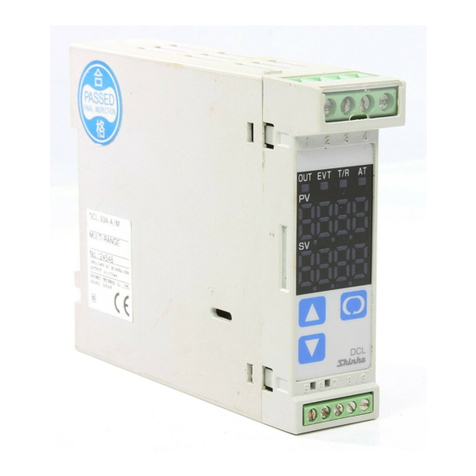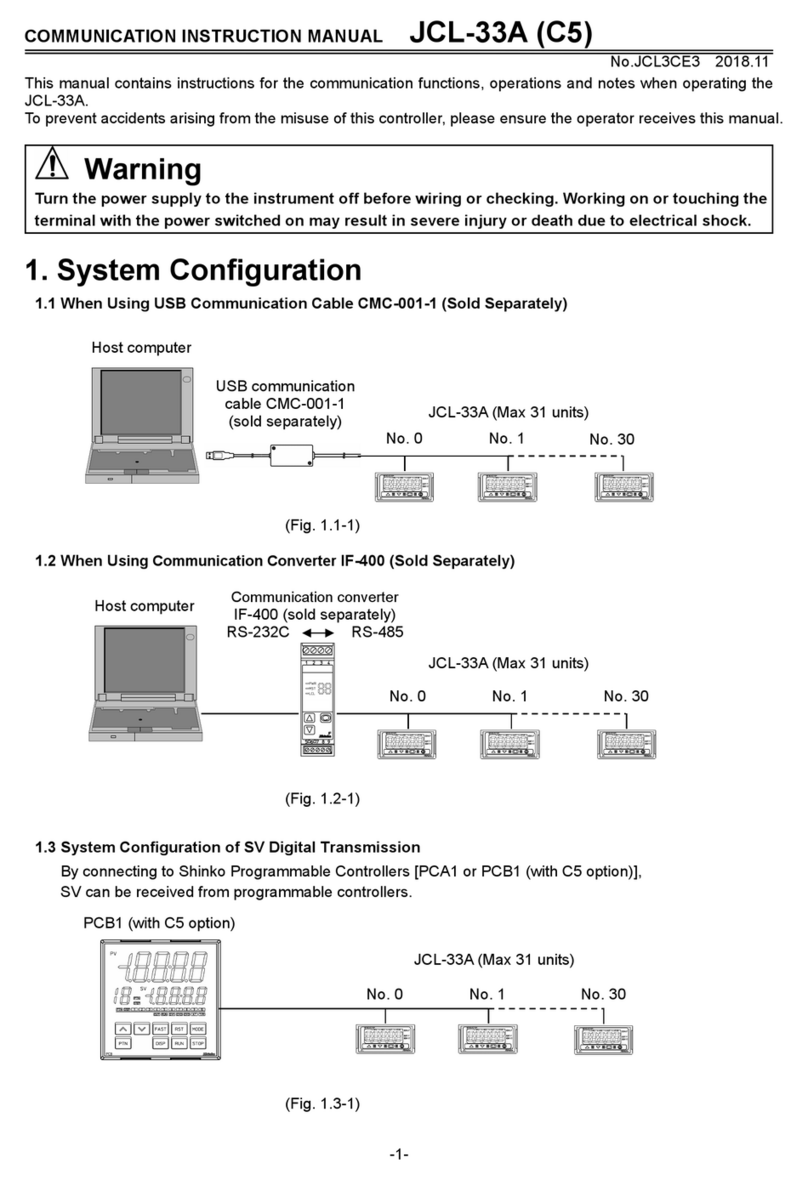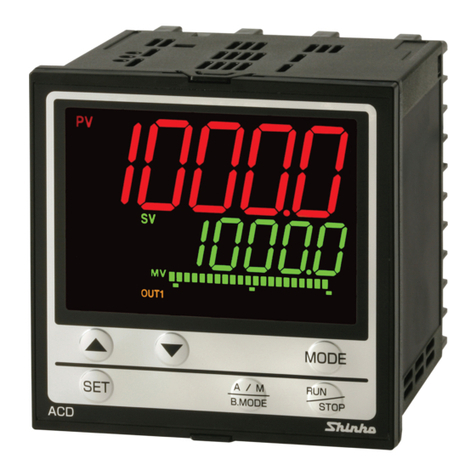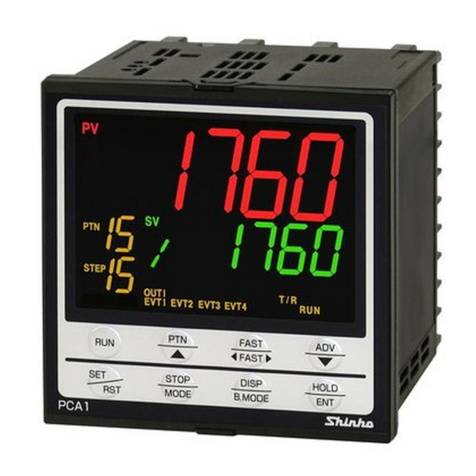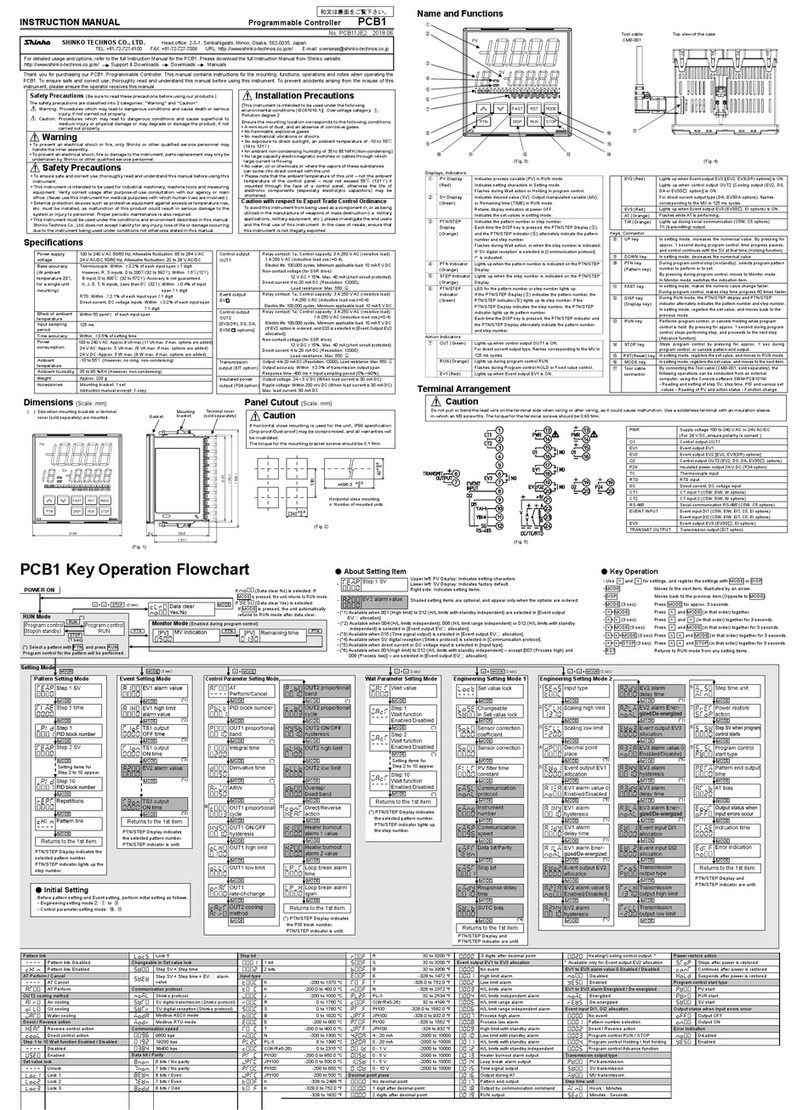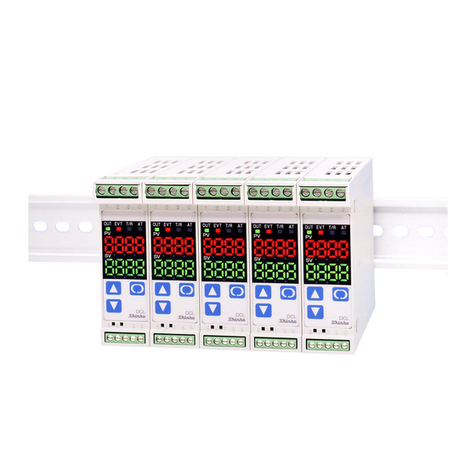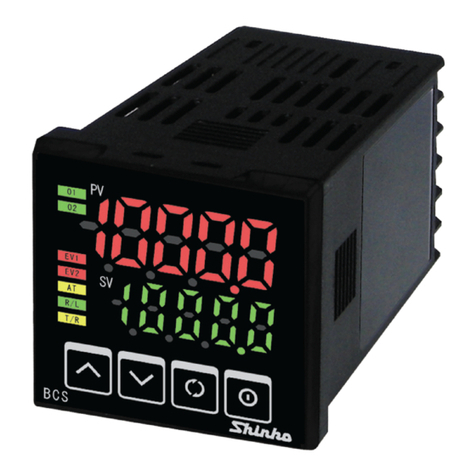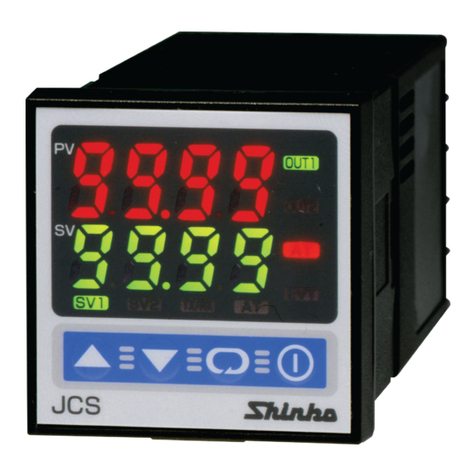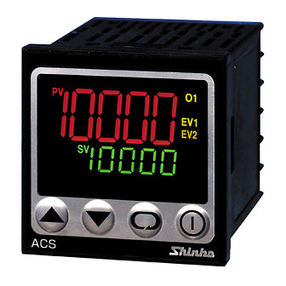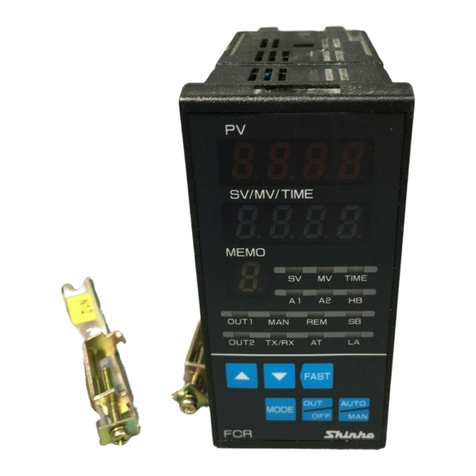10
5. Running
When mounting and wiring to the control panel (DIN rail) are finished, running starts following the next
procedure.
(1) Turn the power supply to the DCL-33A ON.
For approx. 3s after power on, the character of the sensor type and temperature unit are indicated
on the PV display, and the rated maximum value is indicated on the SV display. See [Table 3.1-1].
(If any other value is set at the main setting value high limit setting, SV display indicates it.)
During this time, all outputs and LED indicators are in their OFF status.
After that PV display indicates actual temperature and SV display indicates the main setting value.
(2) Input the setting value.
Input each setting value referring to “3. Operation”.
(3) Turn the load circuit power ON.
Starts control action so as to keep temperature of the controlled object at the main setting value.
6. Other functions
(1) Power failure countermeasure.
Backs up the setting data in non-volatile IC memory.
(2) Self diagnosis
The CPU is monitored by a watchdog timer and when any abnormal status is found on the CPU,
the controller is switched to warm-up status.
(3) Automatic cold junction temperature compensation (Only thermocouple input)
Detects the temperature at the connection terminal between thermocouple and instrument and
keeps it on the same status at which the reference junction is located at 0 (32 ).
(4) Sensor burnout (Burnout)
When thermocouple or RTD input is burnt out, control output is turned OFF (DC current output
type: control output low limit) and “ ” blinks on the PV display.
When DC voltage and DC current input are burnt out, the status is as follows.
When DC current input (4 to 20mA) and DC voltage input (1 to 5V) are burnt out “ ” blinks
on the PV display.
When DC voltage input (0 to 1V) is burnt out, “ ” blinks on the PV display.
When DC current input (0 to 20mA) is burnt out, the same value at 0mA is indicated.
When DC current input (0 to 10V) is burnt out, a value close to 0V is indicated.
(5) Input burnout indication
Thermocouple, RTD input
If the PV value exceeds [input range high limit + (50 or 100 )], “ ” blinks on the PV display
and control output is turned OFF (DC current output type: control output low limit setting value).
However, in the case of the range with a decimal point when PV exceeds 999.9 ( ), “ ” blinks
and control is carried out until the value becomes [Input range high limit + (50 or 100 )] or greater.
DC voltage and current input
If the PV value exceeds [scaling high limit value + (scaling span x 10% or greater)], “ ” blinks
on the PV display and the control output is turned OFF (DC current output type: control output low
limit setting value).
However, when PV value exceeds 9999, “ ” blinks on the PV display and control is carried out
until the value becomes [Scaling high limit + (scaling span x 10%)] or greater.
Thermocouple input
If the PV value exceeds [input range high limit - (50 or 100 )], “ ” blinks on the PV display
and control output is turned OFF (DC current output type: control output low limit setting value).
However, in the case of the range with a decimal point when PV exceeds -199.9 ( ), “ ”
blinks and control is carried out until the value becomes [-199.9- (50 or 100 )] or less.
RTD input
If the PV value exceeds [Input range low limit – (input span x 1)] “ ” blinks on the PV display
and control output is turned OFF (DC current output type: control output low limit setting value).
However, in the case of the range with a decimal point when PV exceeds -199.9 ( ), “ ”
blinks and control is carried out until the value becomes [-199.9- (input span x 1%)] or less.
DC voltage and current input
If the PV value exceeds [Scaling low limit value – (scaling span x 1%)] “ ” blinks on the PV
display and control output is turned OFF (DC current output type: control output low limit setting value).
However if the PV value exceeds –1999, “ ” blinks on the PV display and control is carried out until
the value becomes [Scaling low limit value setting value – (scaling span x 1%)] or less.
